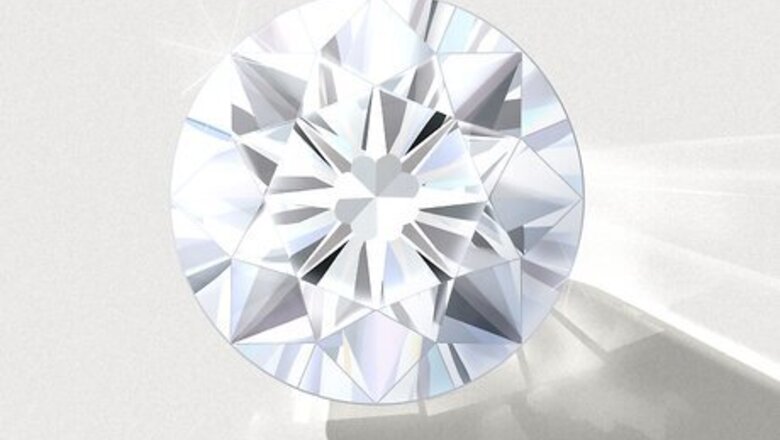
views
Types of Cuts on Diamonds
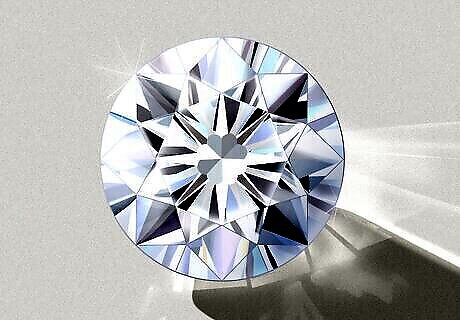
Round brilliant cut “Round brilliant diamonds are the most traditional and the most commonly purchased cut of diamond, especially in the U.S.,” says jeweler Joseph R. Villarreal, G.G. This classic diamond cut usually has 57 or 58 facets (depending on whether the bottom of the stone is pointed or flat). It’s the cut with the most sparkle, and it’s a favorite for anyone who wants a timeless, traditional stone. Consideration: This stone has a fairly small face-up area, meaning it may look slightly smaller than other stones of a similar carat weight. Type of cut: Brilliant Meet the wikiHow Experts Cory Schifter is a certified jewelry appraiser and the owner of Casale Jewelers in Staten Island, New York. Joseph R. Villarreal, G.G. (GIA), is a graduate gemologist and the President of Villarreal Diamonds and Fine Jewelry in Austin, Texas. Kennon Young is a master gemologist appraiser and the owner of Vermont Gemological Laboratory.
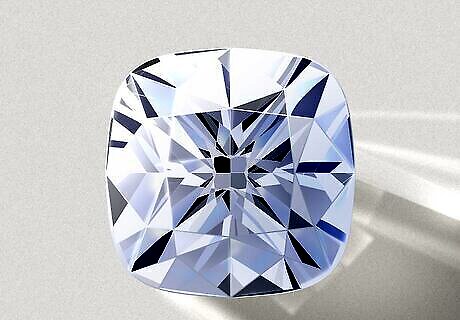
Cushion cut “Cushion cuts have a pillow shape, and right now they’re a close second to round diamonds in terms of popularity,” says Schifter. Cushion cut (sometimes called antique cut) diamonds can be square or oval-shaped with rounded corners, and the angles of the facets create a brilliant sparkle with a lot of prismatic color, or fire. Consideration: The face-up size of cushion-cut diamonds is a little smaller than round brilliant cuts of the same weight. Type of cut: Brilliant
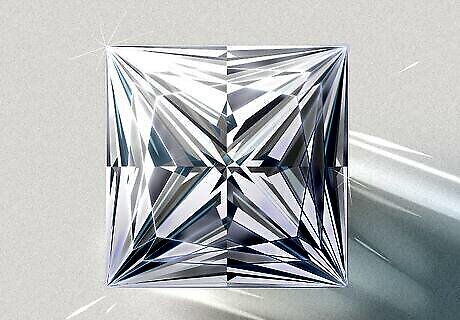
Princess cut Princess cuts feature a square, step-cut top with brilliant-cut bevels that taper to a point on the bottom. This is one of the most popular cuts of diamond behind the round brilliant. It’s a beautiful combination of classic beauty and contemporary style, and it tends to have a slightly larger face-up size than round diamonds. Consideration: The corners on princess cut diamonds have a tendency to chip or snag, so the setting should have protective prongs on the corners. Type of cut: Mixed
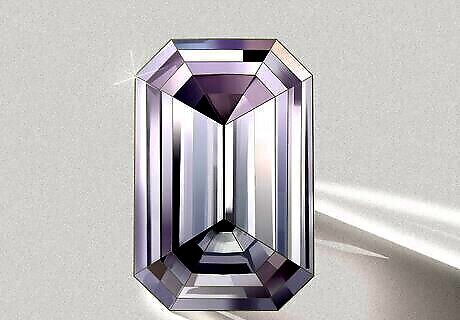
Emerald cut Emerald cuts are a type of step cut, so they create a deeper, reflective sparkle—like multiple mirrors reflecting off each other. It’s an elegant, graceful cut, perfect for someone who loves vintage styles. When emerald cut diamonds are set north-south in a ring (meaning they run parallel to the finger), they can elongate the hand. Emerald-cut diamonds can also be set east-west (perpendicular to the finger). Professional event planner Leah Weinberg says, “East-west emerald cut diamond engagement rings are having a moment right now!” Consideration: Choose a stone with excellent clarity, since this cut tends to show inclusions easily. Type of cut: Step
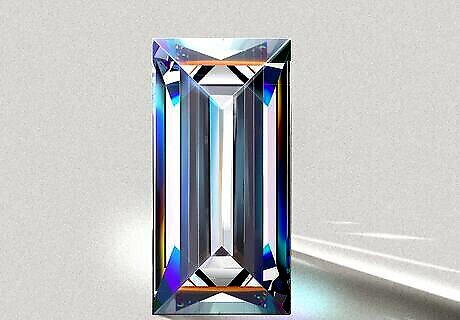
Baguette cut Baguettes are similar to an emerald cut, but they’re narrower. These step-cut diamonds are usually used as accent stones, but they can also be beautiful on their own, especially in a minimalist setting. Consideration: Like other step-cut diamonds, these don’t hide imperfections, so pick a stone with excellent clarity. Type of cut: Step
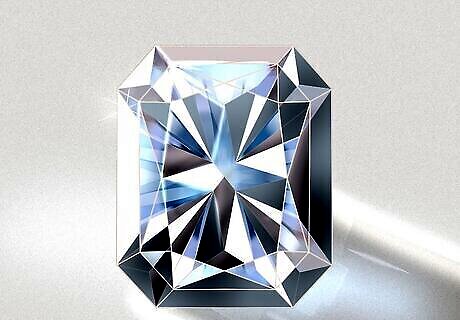
Radiant cut Radiant cut diamonds are a brilliant cut with 70 facets. They’re shaped similarly to a princess cut, but the corners are cropped (which makes them more durable than the princess cut). This is one of the sparkliest diamonds you can find, but it’s still sleek and timeless. Consideration: This cut has a somewhat small face-up size, so it might appear smaller than other diamonds of the same weight. Type of cut: Mixed
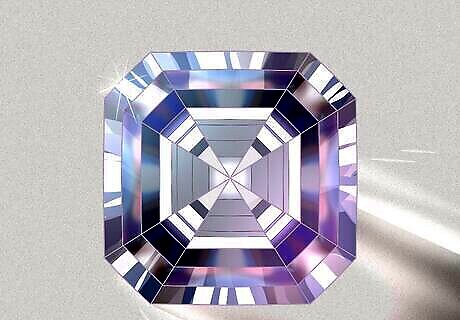
Asscher cut The Asscher cut is a vintage look that’s enjoying a lot of popularity right now. This octagonal step-cut stone was popular in the 1920s and 1930s, and it’s perfect for anyone who loves elegant Art Deco-inspired jewelry. Consideration: Asscher cuts have one of the smallest face-ups of any cut, and since they’re step-cut, they’re best for high-clarity stones without obvious flaws. Type of cut: Step
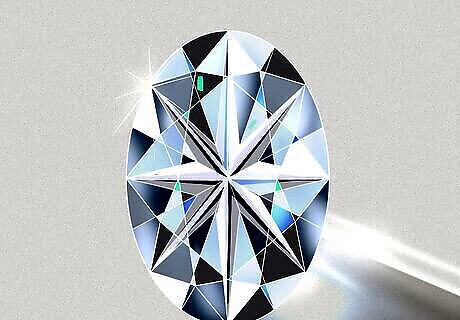
Oval cut Oval cuts have nearly as much flash and sparkle as round brilliants, but with a larger face-up area. This is a timeless look, but it’s also trending right now, so it’s perfect for someone who loves contemporary sophistication. In north-south ring settings, oval-cut diamonds can have an elongating effect on the finger, but they’re also really popular right now in east-west settings. Consideration: The oval shape tends to display a dark bow-tie shadow in the center of the stone. This is considered a flaw and is undesirable, so try to choose a high-quality stone with a minimal bow-tie effect. Type of cut: Brilliant
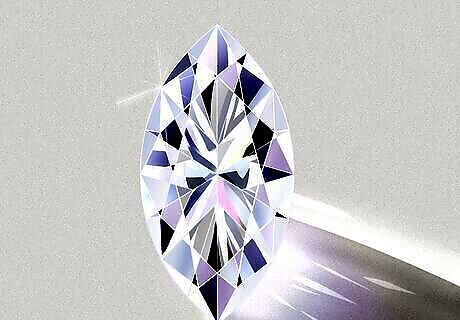
Marquise cut A marquise-cut diamond is oval-shaped with pointed ends. It’s an elegant, vintage stone that’s beautiful in north-south or east-west settings. As a bonus, marquise-cut diamonds have some of the largest face-up sizes of all diamond cuts. Consideration: The points of marquise-cut diamonds can snag or chip, so they should be protected by prongs. Also, like other elongated cuts, this one tends to show the bow-tie effect. Type of cut: Brilliant
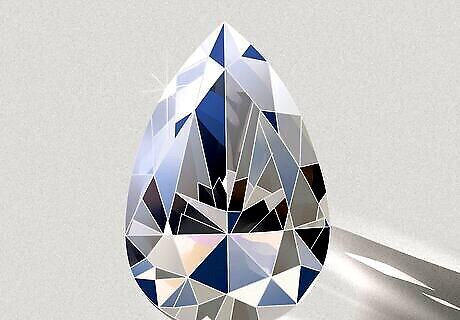
Pear cut Pear cut diamonds have a graceful teardrop shape—similar to a marquise cut, but with one rounded end. It’s not as common as some other cuts, so it’s perfect for someone who wants a unique setting that will stand out in a crowd. Consideration: The pointed end of the pear cut needs to be protected by a prong. This cut may also be prone to showing a bow-tie shadow. Type of cut: Brilliant
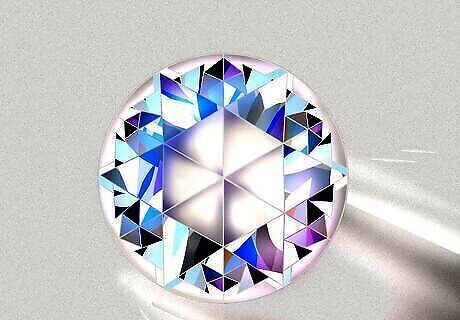
Rose cut The rose cut was invented in the 1400s and remained popular through the 1700s. This cut is flat on the bottom and rounded on top, which gives it a very large face-up style. They fell out of fashion for a while, but they’re becoming popular again, especially with people who want elegant, antique-inspired jewelry. Consideration: Rose cuts were designed to make diamonds sparkle in soft candlelight, so these diamonds don’t have the brilliance of modern cuts. Type of cut: Antique
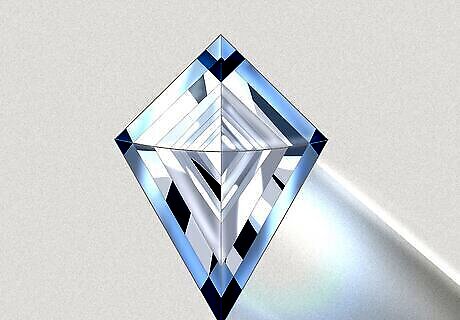
Kite cut Kite cuts have been around since the 1920s and 1930s. They’re diamond-shaped, with two shorter and two longer sides—like a kite. This cut is really rare, so it’s a good option for someone who wants to stand out! Consideration: This cut may not sparkle as much as traditional cuts, and the dramatic corners may be especially prone to snagging or chipping. Type of cut: Can be either step or brilliant
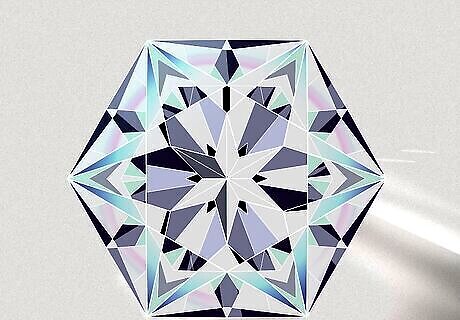
Hexagon cut A hexagon cut is a six-sided, step-cut diamond. It creates a subtle sparkle that’s full of depth. This is a unique cut that’s hard to find, so it’s great if you have a one-of-a-kind style. Consideration: Like other step-cut diamonds, the hexagon cut may not be as sparkly as a brilliant cut. They can also be a little difficult to find since they’re so rare. Type of cut: Step
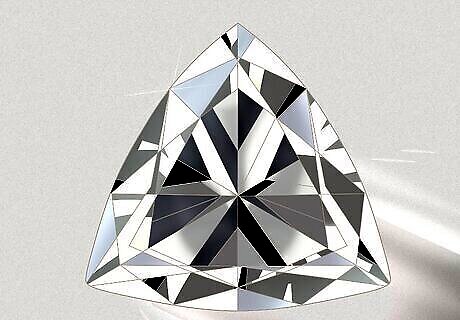
Trillion cut The trillion cut is a unique triangle-shaped stone with plenty of sparkle. They’re most commonly used as side stones, but they can create a one-of-a-kind statement piece when used as a center stone. Consideration: The corners of this stone are prone to snagging. It can also be difficult to find trillion stones, especially in larger sizes. Type of cut: Brilliant
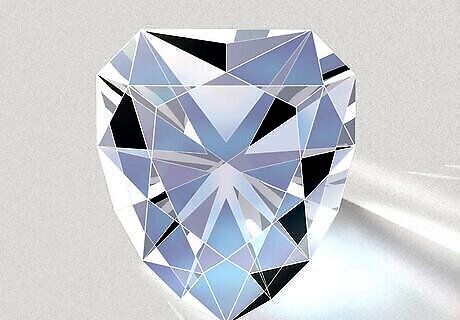
Shield cut Shield cut diamonds are rounded or three-sided on one end, then taper to a point on the other end—like a shield. This cut was first used in the 16th century, and was very popular during the Art Deco period. It’s trending again, especially with people who love unique antique jewelry. Consideration: This is a very rare cut, so it can be hard to find. The pointed end of the stone should be protected by a prong to prevent snags and chips. Type of cut: Can be either step or brilliant
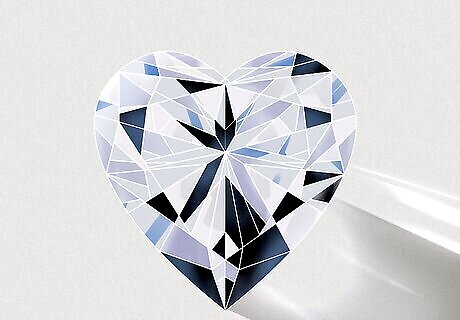
Heart cut The heart cut is about as romantic as it gets. It’s sparkly and brilliant, and it’s a rare, unique choice. It’s perfect if your style is ultra-feminine. Consideration: This cut has a smaller face-up than most other cuts, and the pointed end is prone to chipping or snagging. Also, the proportions of the heart must be skillfully cut to give the heart-shaped effect.
What are diamond cuts?
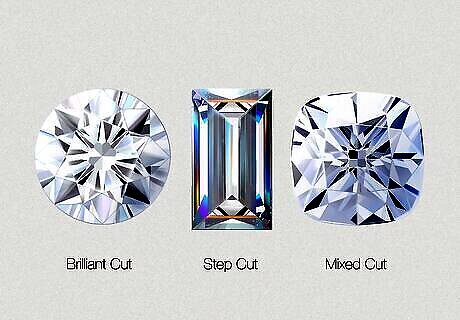
The cut refers to the diamond’s shape and proportions. Schifter explains, “There are two parts to the cut. One is the actual shape of the diamond, but cut also refers to how well the stone reflects light.” The facets (or surfaces) of the diamond are balanced so that light bounces back out of the gem, creating that distinctive sparkle. The three main categories of cuts are: Brilliant cuts—Multiple triangular-shaped facets that are designed to maximize the sparkle of a stone Step cuts—Parallel square or rectangular facets that showcase a stone’s clarity Mixed cuts—Combine elements of brilliant and step cuts
Why is the cut of a diamond important?
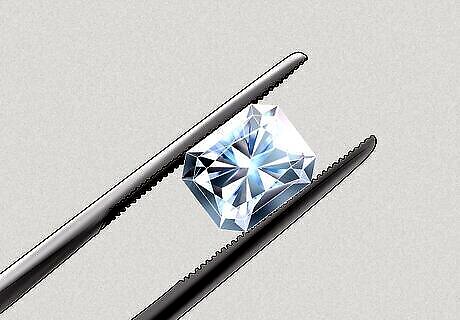
The craftsmanship of the cut affects how well the diamond will sparkle. Schifter says, “The better the cut, the more the light will reflect off the diamond and give it the pop you desire. The depth of the cut is very important as well. A diamond that’s perfectly proportioned from top to bottom will reflect light better than a diamond that’s too deep or too shallow from top to bottom.” The cut affects factors like: Polish: The smoothness of the diamond’s surface Symmetry: The balance of the facets Proportion: The balance of the overall shape Brilliance: How well the diamond reflects light Fire: How well the light refracts into all the colors of the spectrum Scintillation: How much the diamond flashes when it moves Weight: Cuts should preserve as much of the gem as possible while still maximizing the sparkle
How do you choose the right shape for a diamond?
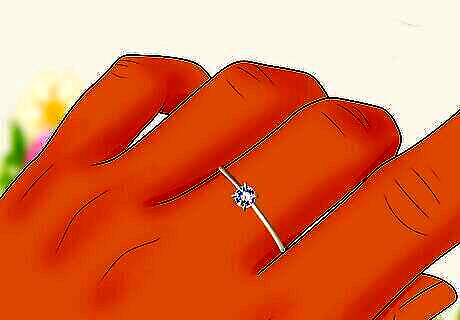
Consider your personal style, the setting, and your budget. Master gemologist appraiser Kennon Young says, “When you’re choosing a diamond, consider the person who will be wearing the stone and what they would prefer.” In addition to the wearer’s style, Young says that choosing the quality of the stone comes down to a personal choice. “Some people would really prefer a high-quality, flawless stone. Other people would rather enjoy a much larger stone, even if it has a few imperfections.” Consider the type of setting and how well it works with the stone. For instance, emerald and round cuts tend to be very classic and elegant, while ovals and cushion cuts are gorgeous in romantic settings with more detail.
Terminology: Parts of a Diamond
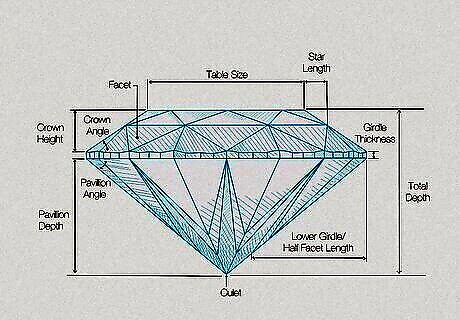
Learn these terms if you want to discuss diamonds like a pro. When you’re talking about the cut of a diamond, each part of the stone has a specific name. They include: Facet: Each flat surface on the diamond Table: The flat surface on the very top of the diamond Crown: The entire top section you see when you look at the diamond from above Girdle: The widest edge, where the top of the stone meets the bottom Pavilion: The bottom section of the stone, from the girdle down Culet: The very bottom point or facet on the stone
FAQs
Which diamond cut is most expensive? Round diamonds are usually the most expensive cut of diamond. However, the cost of a stone can vary a lot based on factors like the shape, weight, color, and clarity.
What is the most popular diamond cut? Round diamonds are the most popular stone because they’re timeless and classic. But emerald, princess, pear, oval, cushion, radiant, and marquise are all popular as well.
What is the rarest cut for a diamond? The rarest cuts of diamonds include shield, heart, kite, and trillion cuts. Antique cuts like the rose cut are fairly rare, as well.
What is the cheapest diamond cut? Stones with a larger face-up look bigger than other stones of the same weight, so they tend to cost less than other stones that look like they’re the same size. Stones with large face-ups include marquise, pear, and oval.
Which diamond cut sparkles the most? Brilliant cuts are the sparkliest diamonds, because the multiple facets are designed to maximize the reflection of light. The most popular brilliant cuts include round, cushion, and radiant.
What do diamonds look like before they’re cut? According to Young, “The most common shape for a natural diamond is a dodecahedron. It looks like two pyramids stacked base to base.”














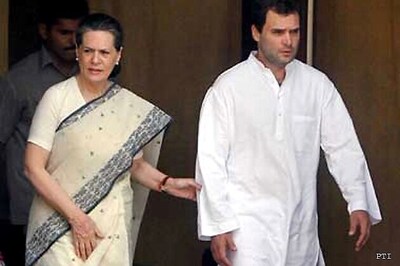





Comments
0 comment